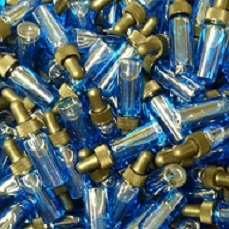880 results found for: ""
Page 71 of 88 pages. ‹ First < 69 70 71 72 73 > Last ›
Anti-Human IgG (Clear)
…In 1945, Coombs, Mourant and Race described the use of anti-human globulin serum for detecting red cell-bound non-agglutinating antibodies. When used by recommended techniques, the reagent will cause agglutination (clumping) of red cells, carrying IgG, in the antiglobulin phase of testing. No agglutination usually indicates the absence of IgG. Lorne…
Precise Weak Anti-D
…Careful control of both manual and automated techniques for detecting antibodies is essential. Testing of a weak IgG Anti-D with group O R1r red cells in parallel with routine antiglobulin or enzyme tests will confirm the efficacy or otherwise of the chosen technique. When used by the recommended techniques, the…
Inert AB Serum
…Inert AB serum is a serum derived from a pool of human plasma, which is used as negative control for IAT tests, enzyme tests and as diluent. A positive result obtained with Lorne Inert AB Control Serum in addition to those obtained with Lorne Blood Grouping Reagent indicates that the…
Monoclonal D Negative Control
…False positive reactions rarely occur with monoclonal blood grouping reagents due to their low protein content. However, if a reagent control is required, e.g. when typing red cells from patients suspected of having auto-antibodies or serum protein abnormalities, Lorne Monoclonal D Negative Control for Monoclonal Anti-D reagents is advised. A…
Monoclonal Rh Control
…Lorne Monoclonal Rh Control is for the control of Monoclonal Anti-Rh reagents and Anti-K Monoclonal and it is formulated with the same concentrations of phosphate buffer, sodium chloride, bovine albumin and macromolecular potentiators as Lorne Monoclonal Anti-Rh reagents with just the antibodies omitted. The reagent is supplied at optimal dilution…
Anti-Dia Polyclonal
…Lorne Human Anti-Dia blood grouping reagent is prepared from human serum diluted in a sodium chloride solution containing macromolecular potentiators and bovine albumin. The reagent is supplied at optimal dilution for use with indirect Coombs tube test and gel card techniques. For further information or to place an order from…
Anti-Leb Monoclonal
…The Lewis system antigens are not an integral part of the red cell membrane and are produced by tissue cells and found primarily in plasma and watery secretions. Red cells acquire Lewis antigens by absorption from surrounding plasma. The amount of Lewis antigen expressed on a cell can vary with…
Anti-Lea Monoclonal
…The Lewis system antigens are not an integral part of the red cell membrane and are produced by tissue cells and found primarily in plasma and watery secretions. Red cells acquire Lewis antigens by absorption from surrounding plasma. The amount of Lewis antigen expressed on a cell can vary with…
Anti-P1 Monoclonal
…Landsteiner discovered the P1 antigen in 1927. Anti-P1 does not generally react above room temperature and may often go undetected in routine testing. Anti-P1 does not cause Haemolytic Disease of the Newborn and has only rarely been associated with Haemolytic Transfusion Reactions. The reagent will cause agglutination (clumping) of test…
Anti-K Monoclonal
…The K, k, Kpa and Kpb antigens were reported in 1946, 1949, 1957 and 1958 respectively. Kell system antigens are fully developed at birth and the K antigen is very immunogenic. Anti-K, anti-k, anti-Kpa and anti-Kpb have been implicated in Haemolytic Transfusion Reactions and Haemolytic Disease of the Newborn. Lorne…

